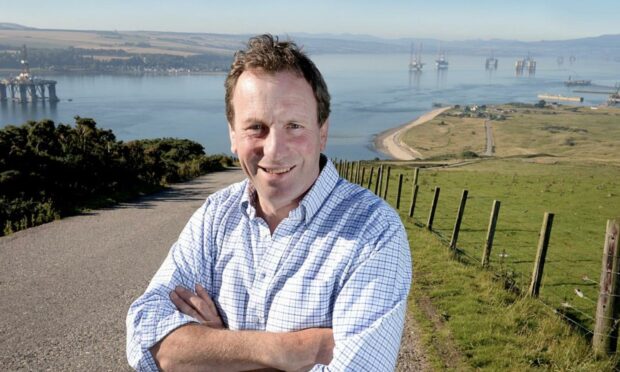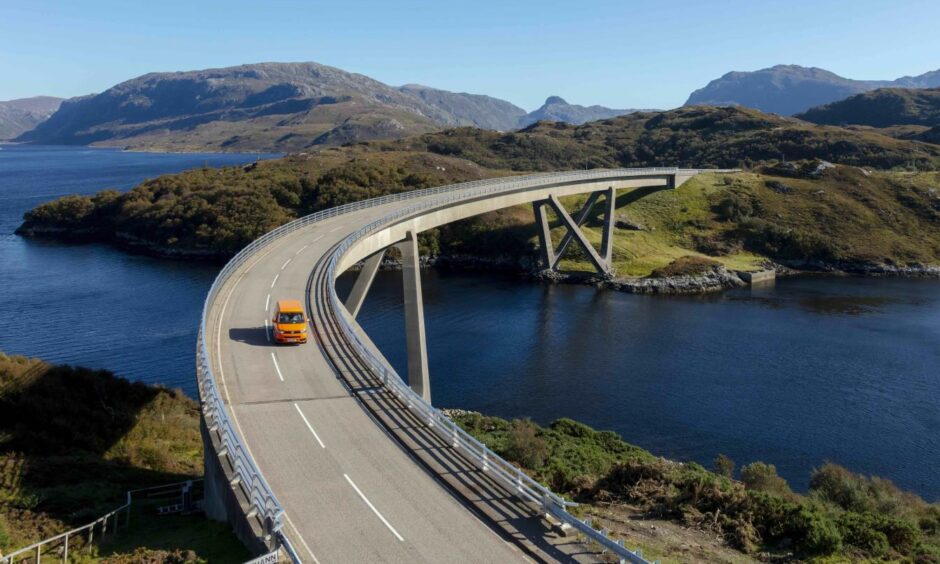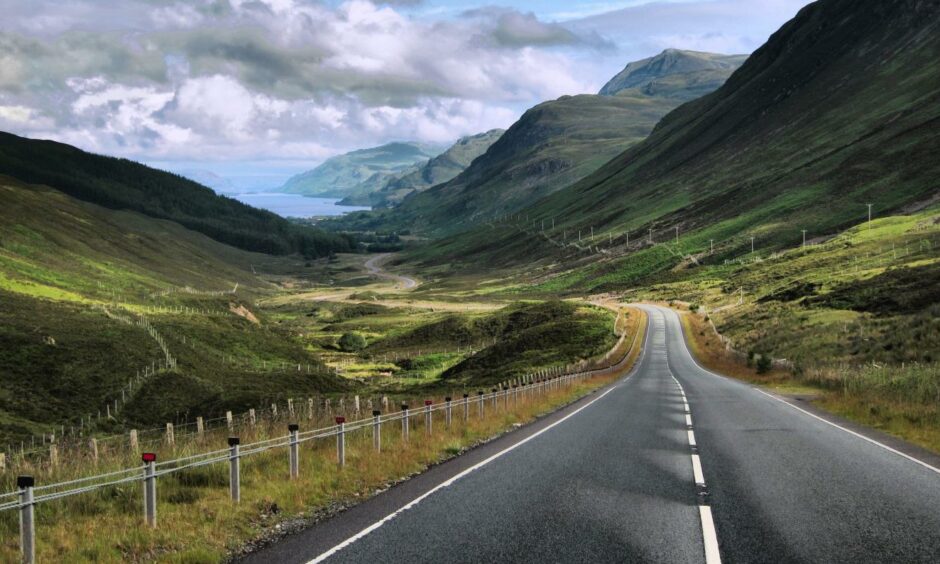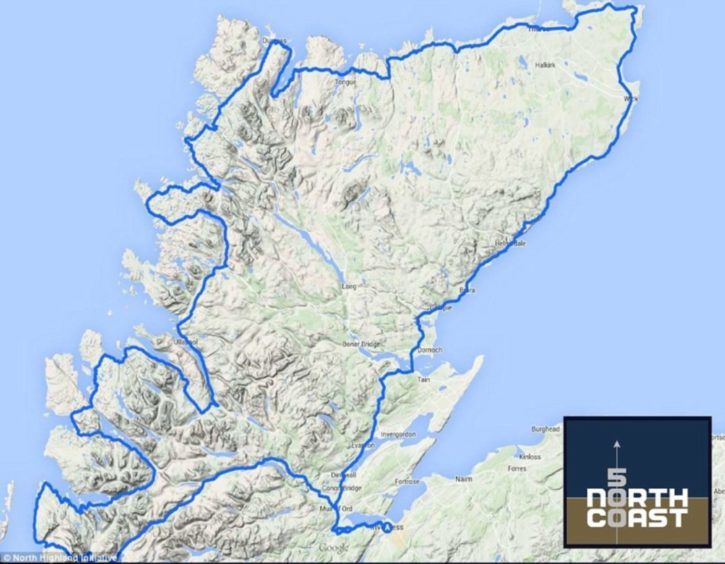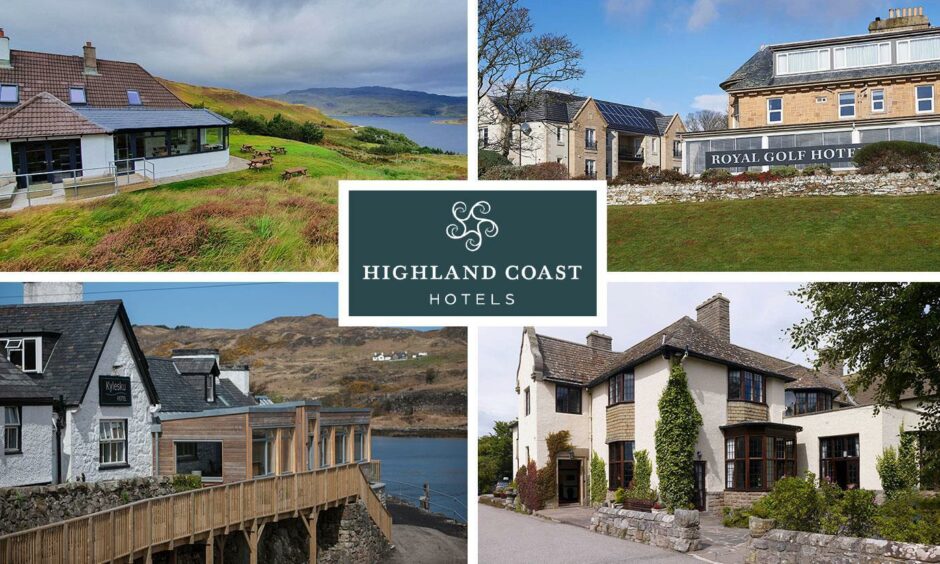After a highly successful road trip, David Whiteford is ready to take an alternative route.
Mr Whiteford has stepped down as chairman of the North Highland Initiative (NHI) charity, which helped establish and develop the North Coast 500.
His new role hasn’t involved too much of a diversion.
He is now group chairman of the newly-formed Highland Coast Hotels which has bought four well-known venues on the NC500.
‘It was time to move on’
Kylesku Hotel and Newton Lodge in Sutherland, the Royal Marine Hotel in Brora and the Royal Golf Hotel in Dornoch are now under a single brand– and there are plans to add more.
“The time was right for me to do other things”, said Mr Whiteford of his departure from NHI after 12 years.
“It was time to move on and for a new broom, a new chair with fresh ideas, to take NHI to a new level.”
NHI, which is now seeking a new non-executive chairman and part-time chief executive, was set up in 2005.
It followed the Duke of Rothesay bringing together the farming, business and tourism communities to address challenges facing rural parts of Caithness, Sutherland and Ross-shire.
During his chairmanship, Mr Whiteford helped develop the Mey Selections Highland food and drink brand, supplying quality produce from within a 150 mile radius of the Queen Mother’s former residence at Castle of Mey.
NHI also secured a beef and lamb contract with Sainsbury’s, while creating cultural, heritage and food and drink events, including farmers markets and the Highland Military Tattoo.
Route brings in more than £20m a year
By 2018, the Sainsbury’s partnership had paid more than £2 million in premiums.
It has also been credited with helping to secure a long-term future for farmers and crofters in one of the most fragile parts of Europe.
Other initiatives include the John O’Groats Trail, a consultation on the future of Brora and, with Westminster Estates, sponsorship of Countryside Learning Scotland to raise awareness among schoolchildren of land-based job opportunities.
But its highest-profile project is the NC500, which is widely regarded as Scotland’s answer to Route 66.
It brings in more than £20 million in tourism spend each year.
It was also placed among the most desirable European road trip destinations in a recent survey.
The idea was born when NHI tourism board members studied Route 66, which opened in 1926, supporting communities along the road.
“We looked at that history and thought we could do something similar”, said Mr Whiteford.
“I had also been lucky enough to experience other touring routes, such as the Great Ocean Road (in Australia) and Big Sur (California) and thought ‘we’ve got better than this’.
“We certainly knew we could draw focus to it and grow the economy through it. The NHI’s objectives were to grow the rural economy sustainably, create ideas to tackle the issue of an ever-ageing population and try to halt the exodus of young people to the central belt and beyond.
Local criticism
“How could we get them to stay? How could we stop school rolls declining, sustain services and modernise infrastructure?”
Most people are delighted with the opportunity, but there are pinch points.”
David Whiteford
He said the route has created “well over” 200 jobs and provides opportunities for local people.
But not everyone is happy.
Some local people have criticised the NC500 for creating traffic problems and attracting huge numbers of people without the necessary infrastructure to support such an influx.
Applecross Community Council said the idea of ‘withdrawing’ from the NC500 has been mooted as part of discussions on managing the negative effects of tourism.
Mr Whiteford said: “There are more than 60 communities on the route. Most are delighted with the opportunity, but there are pinch points.
“There is undoubtedly a need to encourage our visitors to explore away from the route and a great opportunity to create more attractions and activities to hold them there for longer.
“We have to listen to people who are unhappy with the growth of tourism in the north Highlands and work with them so that we can all prosper in a more harmonious way.
“There’s a catch up required in terms of supporting infrastructure such as improved (and more) toilet facilities, Aires-type systems for motorhomes and more roadside pulling off points.
“This needs a partnership approach from all relevant agencies, Highland Council and, of course, the Scottish Government.
Young people are our ‘most endangered species’
“No-one would have believed at the outset the impact of the NC500 and it would have been impossible to pre-build for it.”
He added: “It’s often said, in this sparsely-populated but stunningly beautiful region of Europe, the most endangered species is our young folk who feel they need to move south for work.
“There’s no doubt a strong year-round visitor economy can help remedy that issue.”
A theme started with NHI and will continue with Highland Coast Hotels is ‘slow tourism’.
This encourages visitors to take more time to cover the NC500 and stay longer in the area, although the latest research shows people take an average of 11 to 12 days on the trip.
Mr Whiteford said the hotel group will invest to refurbish and add rooms.
It will also work with communities, use local produce and services wherever possible and highlight zero carbon/green initiatives.
“I plan, with the support of the Highland Coast team, to put some of the learnings from NC500 into action.
“Improve quality standards, engage local supply chains, stretch the season, create more opportunities for visitors to stay here longer.
“In doing so, develop long-term prospects for employment in the visitor economy.
“Our intention is to work with the University of the Highlands and Islands’ hospitality schools to encourage more young people into the industry for whole-life careers and not just summer jobs.”
‘We have a lot to be proud of’
Mr Whiteford was praised for his “commitment, dedication and leadership” by NHI board member David Hughes.
He said: “Under David’s leadership, NHI has made significant progress over the last decade and we have a lot to be proud of.
“We’re now looking forward to the next 10 years and would welcome applications from anyone who feels they have what it takes to lead the charity into the next phase of its development.”
